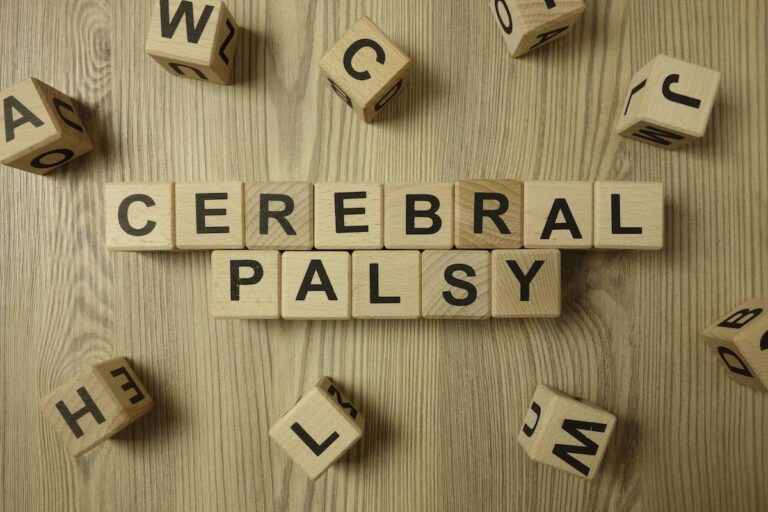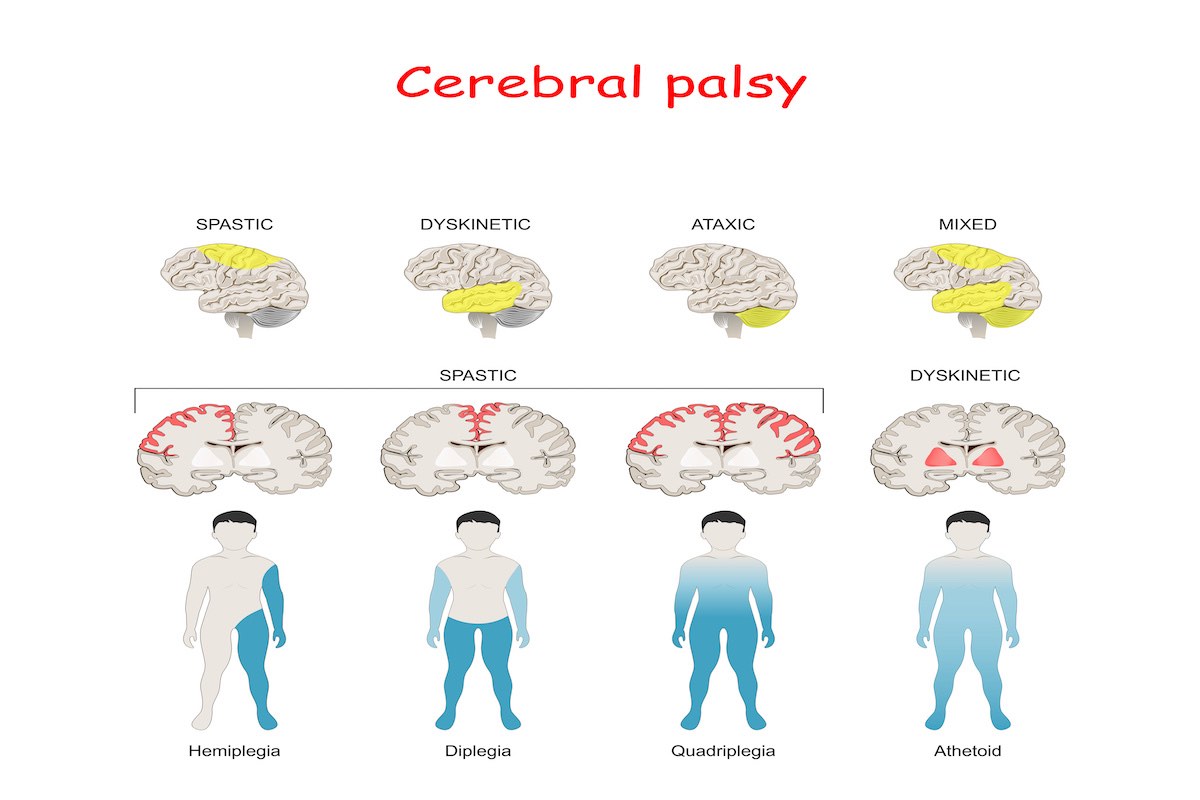
Call 24/7 for a FREE case evaluation
Call now (866) 393-4334

$100,000,000
in California case results
$20,000,000
in California jury verdicts
14
award-winning attorneys in network

Cerebral palsy is a general term for a group of disorders impacting a person’s motion, balance, and posture. Medical experts who treat after an accident recognize four main types of cerebral palsy; they are: Spastic, Athetoid, Ataxic and Mixed.
Physicians consider the main type of movement disorder associated with the condition to diagnose types of cerebral palsy in their patients. Common movement disorders include spasticity, rigidity, involuntary movements, and abnormal muscle tone.
Muscle tone is classified as hypertonia, a condition when muscle tone is greater than normal, or hypotonia, a condition when muscle tone is lower than normal. Learning more about the different types of cerebral palsy can help improve your understanding of the condition and help decide on what cerebral palsy treatment or therapy is best suited for your child.
Spastic cerebral palsy, sometimes called pyramidal cerebral palsy, affects more than 70 percent of cerebral palsy patients and is the most common type of cerebral palsy. Those with spastic cerebral palsy are hypertonic with stiff, tight muscles which cannot relax in some parts of their body. The affected joints can become rigid and difficult to move.
People with spastic cerebral palsy struggle to control their movements, eat and speak. Many people with spastic cerebral palsy walk with an abnormal gait, such as walking on their toes instead of on flat feet.
Spastic Cerebral Palsy has been divided into three categories:
Spastic cerebral palsy results from damage to the brain’s motor cortex, pyramidal tracts, or general cortical damage. The more severe the brain injury, the greater the symptoms tend to be. Recognizing the signs of spastic cerebral palsy can be difficult until children start missing developmental milestones. It usually takes up to 18 months of age for physicians to diagnose the condition.
Athetoid cerebral palsy, sometimes called extrapyramidal or dyskinetic cerebral palsy, is a less common form, affecting between 10 and 20 percent of cerebral palsy patients. This type of cerebral palsy is notable for causing movements out of the sufferer’s control, such as slow writhing of the body and jerky movements of the arms, legs, hands and feet.
Laura Rogers and Eric Wong, writing for McMaster Pathophysiology Review, state that, infants with the condition are typically hypotonic, with “poor head control and head lag.” As patients age, their muscle tone tends to increase, although the degree of muscle tone varies from person to person.
Rigidity and dystonia are not uncommon among people with athetoid cerebral palsy. It tends to impact the upper extremities more than the lower ones. In addition, athetoid cerebral palsy often affects the oropharyngeal muscles, which can make eating and speaking difficult. Despite these symptoms, intelligence is rarely affected.
Rogers and Wong comment that athetoid cerebral palsy is most commonly caused by asphyxia, lack of oxygen, at birth. Kernicterus and metabolic genetic disorders can also cause athetoid cerebral palsy, according to Rogers and Wong, and people with this condition often have neuropathological lesions on the basal ganglia and thalamus in the brain.
Up to 10 percent of children with cerebral palsy have ataxic cerebral palsy. Those with ataxic cerebral palsy tend to have tremors that occur with voluntary movements. This leads to difficulty performing tasks requiring precise motor control, such as buttoning their clothes and writing, they’ll often walk with an unsteady gait with their feet far apart from one another.
Ataxic cerebral palsy occurs when the cerebellum, the part of the brain essential for uninhibited motor function, is damaged. The condition is not typically diagnosed until a child is about 18 months old; early diagnosis is more likely to be inaccurate.
Mixed cerebral palsy is also a recognized type. People with mixed cerebral palsy have symptoms of more than one type of the above varieties, hence its name. They may have some hypertonic muscles, as people with spastic cerebral palsy do, and some hypotonic muscles, as people with athetoid cerebral palsy do. Mixed cerebral palsy results from damage to many parts of the brain. The most widespread combination of mixed C.P involves both athetoid and spasticity movements; however, other combinations are also possible.
WE’RE OPEN NOW
Our staff are standing by to help you find the perfect attorney for your case.

Published: 16 May 2022